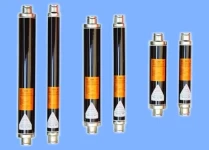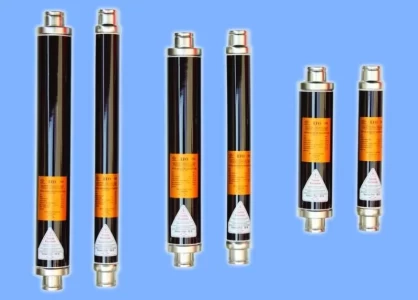Low Voltage Fuses
Protecting Branch Circuits With Low Voltage Fuses
Environmental Impacts on LV Fuse Performance
Low Voltage Fuses
Innovations in Low Voltage Fuse Technology
Low voltage fuses are essential components in electrical systems, providing protection against overcurrent and preventing damage to equipment. Recent advancements in materials science and design techniques have led to significant improvements in the performance and reliability of these fuses. This article explores the latest innovations in low voltage fuse materials and design, and how they enhance the functionality and efficiency of electrical protection systems.
Traditional Fuse Materials and Limitations
Traditional LV fuses typically utilize copper or silver for their fuse elements. These materials offer good conductivity but have limitations:
Temperature Sensitivity: The melting point of these materials dictates the fuse's operating range. Extreme temperatures can affect their performance and necessitate derating.
Aging Effects: Over time, oxidation and other factors can degrade the fuse element, potentially leading to altered tripping characteristics.
Limited Interrupting Ratings: Traditional materials may not offer the highest interrupting ratings required for modern electrical systems with increased fault currents.
Advancements in Fuse Materials
High-Performance Conductive Elements
The heart of a fuse's functionality lies in its conductive element, which melts under excessive current, breaking the circuit. Innovations in materials have led to the development of high-performance conductive elements that offer improved electrical characteristics, such as faster response to overcurrent...
Related Articles
Environmental Impacts on LV Fuse Performance
Low voltage fuses are designed to protect electrical circuits from overloads and short circuits, ensuring the safety and reliability of electrical systems. However, their performance can be significantly affected by environmental conditions such as temperature and humidity. Understanding the impact...

Introduction to Smart Low Voltage Fuses
The advent of smart technology has revolutionized various aspects of the electrical industry, including the development of smart low voltage fuses. These advanced protective devices integrate intelligent features that enhance the functionality, reliability, and efficiency of electrical systems....
Fuse Compatibility With Mixed Technologies
In the realm of electrical systems, integrating low voltage fuses in mixed technology environments presents unique compatibility challenges. These environments combine old and new technologies, necessitating careful consideration to ensure that the protective devices function effectively and...
Selectivity in Low Voltage Fuse Systems
Selectivity, or discrimination, in low voltage fuse systems is a critical design and operational aspect, ensuring that only the faulty circuit is disconnected when a fault occurs, thereby minimizing the impact on the rest of the electrical system. This concept is essential for maintaining the...
Safeguarding Electronic Circuits with Low Voltage Fuses
Safeguarding Electronic Circuits with Low Voltage Fuses Electrical fuses, particularly low voltage fuses, are critical in protecting sensitive electronic circuits in a myriad of devices. From power supplies to advanced computing systems, these components play a vital role in ensuring operational...
Protecting Branch Circuits With Low Voltage Fuses
Low voltage (LV) fuses are unsung heroes within electrical systems, silently safeguarding branch circuits from potentially damaging overcurrent conditions. Found in homes, buildings, and commercial facilities, these essential components play a critical role in preventing electrical fires and...
Energy Efficiency and Sustainability in Fuse Design
The global emphasis on energy efficiency and sustainability is significantly influencing the design and selection of low voltage fuses. As integral components of electrical systems, low voltage fuses are evolving to meet the demands for not only safety and reliability but also for environmental...

Introduction to Smart Low Voltage Fuses
The advent of smart technology has revolutionized various aspects of the electrical industry, including the development of smart low voltage fuses. These advanced protective devices integrate intelligent features that enhance the functionality, reliability, and efficiency of electrical systems....
Innovations in Low Voltage Fuse Technology
Low voltage fuses are essential components in electrical systems, providing protection against overcurrent and preventing damage to equipment. Recent advancements in materials science and design techniques have led to significant improvements in the performance and reliability of these fuses. This...
Environmental Impacts on LV Fuse Performance
Low voltage fuses are designed to protect electrical circuits from overloads and short circuits, ensuring the safety and reliability of electrical systems. However, their performance can be significantly affected by environmental conditions such as temperature and humidity. Understanding the impact...
